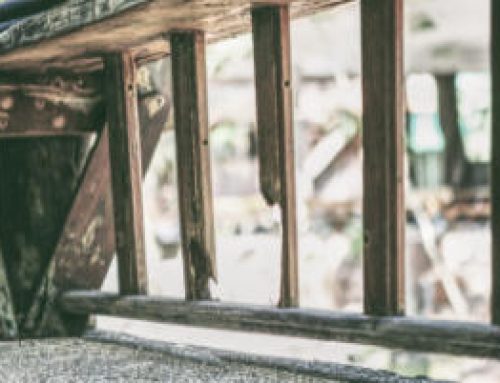Your building envelope is your first line of defense against external elements such as wind and moisture infiltration in order to safeguard the interior of your home or building, and understanding both a successful performance and potential failures is important for property owners, facility managers and construction professionals alike. In this post, we’ll look at the definition of a building envelope and the challenges posed by time and environmental factors.
What is a Building Envelope?
The building envelope serves as the barrier between the interior and exterior environments in order to provide protection against external elements that include weather, temperature fluctuations and moisture. It is essentially the outer shell of a building, encompassing the walls, roof, windows and doors (fenestrations), and foundation.
Important Roles for the Building Envelope
Energy Efficiency
One of the key roles of the building envelope is energy efficiency. An effective envelope helps regulate the temperature within the building, reducing the need for excessive heating or cooling. This can lead to lower energy consumption and operational costs. Important components for energy efficiency include insulation materials, window glazing, and ventilation systems to optimize thermal performance. Air tightness should prevent air leakage, and reduce heat loss or gain.
Moisture Management
Moisture management is another key role. Uncontrolled moisture intrusion can lead to a range of issues including mold growth, structural damage, and compromised indoor air quality. A well-designed building envelope includes moisture barriers, proper sealing, and effective drainage systems.
Structural Durability
The materials chosen for the walls, roof and foundation must withstand the stresses imposed by external forces such as wind, snow, and seismic activity. Careful attention to design details, including proper load distribution and structural connections, is essential to ensure the structure’s long-term stability and safety, along with the selection of high-quality, durable materials.
Aesthetics
The exterior appearance of a building or home contributes to its overall character and integration into the surrounding environment. A balance between functionality and visual appeal lies in the selection of materials, colors and architectural features. Wood and vinyl siding, stucco and EIFs, fiber cement, masonry, and composites are all examples of exterior cladding materials which can provide aesthetic appearance to your home or building.
Potential Building Envelope Failures
Building envelope failures can manifest in both visible and invisible forms. Several indicators can signal potential problems within the building envelope, and require attention and intervention to prevent further structural damage.
- Water infiltration. Stains, discoloration, or visible water damage on walls or ceilings may indicate that water has breached the envelope. This could result from leaks in the roof, windows, or walls.
- Building material deterioration. Materials such as wood, drywall, or insulation that show signs of decay, warping, or rot may suggest prolonged exposure to moisture, and can lead to more severe problems if not addressed promptly.
- Air leakage. Drafts, uneven temperatures, or an increase in energy bills may indicate a failure in the air tightness of the building envelope, along with ineffective seals around windows, doors, and other openings.
- Cracking or shifting walls. As structural issues, these failures may result from settling, foundation problems, or inadequate structural design.
- Condensation on interior surfaces, especially near windows. This may indicate inadequate insulation or ventilation, potentially leading to mold growth and compromised indoor air quality.
Technology for Building Envelope Inspections
Technology plays a role in building envelope inspections, allowing professionals like Först Consulting Group to assess various aspects of a structure’s integrity and performance.
Thermal Imaging
One widely-used technology is thermal imaging. Thermal cameras detect temperature variations on surfaces to help identify areas of heat loss or gain, and aid in assessing the effectiveness of insulation and identification of potential thermal weaknesses in walls, roofs, and windows.
Infrared Thermography
Infrared thermography uses infrared cameras to capture thermal images of a building’s surfaces. It works to reveal hidden moisture issues by detecting temperature variations associated with damp or wet areas, or potential water infiltration points.
Drones
Drones, equipped with high-resolution cameras and sometimes thermal imaging capabilities provide a comprehensive view of the building envelope from various angles. This allows the professional inspector to assess the roof, façade, or other elevated areas efficiently and safety. Drones are particularly useful for large or complex structures.
Electronic Leak Detection
Using specialized equipment, such as low-voltage electrical currents or capacitance meters, inspectors can detect the presence of moisture within roofing materials.
Blower Door Tests
To assess the air tightness of a building envelope, a powerful fan is placed in an exterior door opening to depressurize or pressurize the building. By measuring the airflow required to maintain a specific pressure difference, inspectors can quantify the level of air leakage.
Ultrasonic Testing
Ultrasonic devices use sound waves to detect hidden defects or weaknesses within materials to help identify issues such as delamination, voids, or moisture infiltration in roofing membranes.
Once a failure is discovered, a thorough assessment to determine the extent of the problem is necessary, and warrants immediate attention and a systematic approach to address the issue and prevent further damage. Necessary repairs, improvements, or modifications are planned to treat the root cause rather than the symptoms.
Building Envelope Inspections by Först Consulting Group
Först Consulting Group has specialized knowledge and certifications in design, construction and performance of building envelopes, and a deep understanding of various materials, construction techniques, and the factors influencing the envelope’s effectiveness. We have experience in conducting comprehensive inspections, utilizing advanced diagnostic tools and technologies, and developing effective remediation plans.
An informed approach to evaluating building envelope performance helps maintain the sustained health and efficiency of any building or home. If you have detected any of the symptoms or indications of an envelope failure, trust the professionals at Först Consulting Group.
Först Consulting Group serves clients throughout the Northern Virginia and Washington DC metropolitan region. Nationwide service is also available. Contact Först today for an initial consultation.


